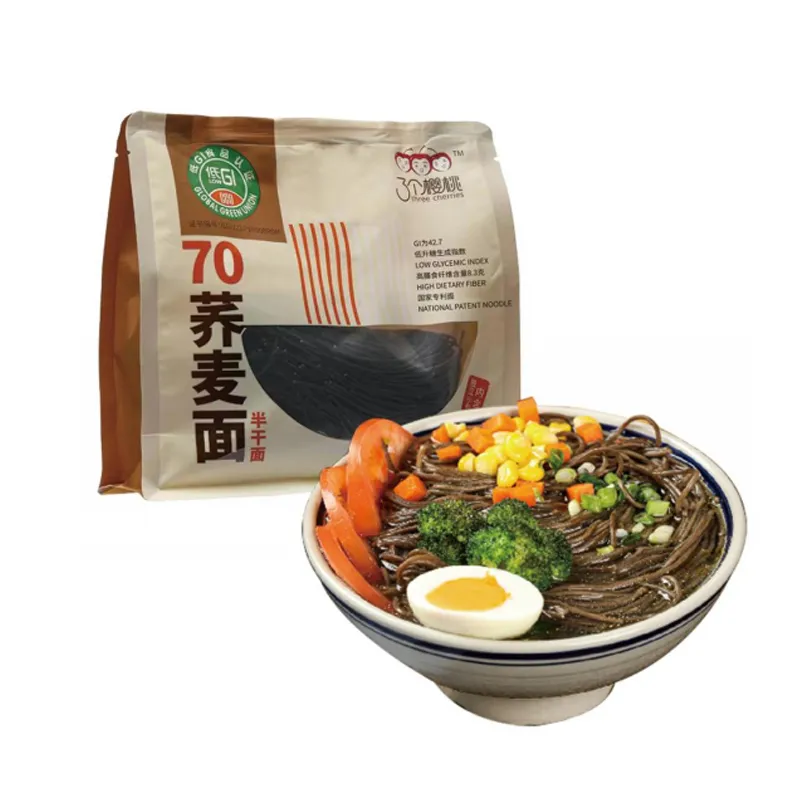100 buckwheat soba
The Delight of 100% Buckwheat Soba A Culinary Journey
Soba has long been an integral part of Japanese cuisine, known for its delicate texture, nutty flavor, and numerous health benefits. Among the various types of soba noodles available, 100% buckwheat soba stands out, offering a gluten-free alternative that caters to dietary restrictions while still delivering an authentic taste experience. In this article, we will explore the origins, health benefits, and culinary versatility of 100% buckwheat soba, making a case for why it deserves a place in your pantry.
Origins of Soba
Soba noodles trace their roots back to Japan, where they have been consumed for over a thousand years. Traditionally made from a combination of buckwheat flour and wheat flour, these noodles are cherished for their robust flavor and chewy texture. However, 100% buckwheat soba takes the classic recipe a step further, providing a gluten-free option for those with celiac disease or gluten intolerance. Pure buckwheat soba, known as juwari soba in Japanese, is made entirely from buckwheat flour, allowing for a more intense flavor and a distinct personality that sets it apart from its blended counterparts.
Health Benefits
One of the primary reasons to incorporate 100% buckwheat soba into your diet is its impressive nutritional profile. Buckwheat itself is a powerhouse grain, rich in essential nutrients such as protein, fiber, and antioxidants. It is particularly high in rutin, a flavonoid that has been linked to improved cardiovascular health, reduced inflammation, and enhanced blood circulation. Furthermore, buckwheat is a complete protein source, containing all nine essential amino acids, making it an excellent choice for vegetarians and vegans.
Beyond its rich nutrient content, buckwheat soba is low in calories and has a low glycemic index, making it a heart-healthy option that can help manage blood sugar levels. This characteristic is particularly beneficial for individuals looking to maintain their energy levels throughout the day without experiencing the crashes associated with high-glycemic foods.
100 buckwheat soba

Culinary Versatility
One of the greatest joys of cooking with 100% buckwheat soba is its versatility. These noodles can be enjoyed warm or cold and can be incorporated into a variety of dishes. When served hot, buckwheat soba can be paired with a flavorful broth, seasoned with soy sauce, mirin, or miso, and topped with a variety of ingredients like tempura vegetables, green onions, and seaweed.
Alternatively, cold soba is popular during the summer months, often served on a bed of ice and accompanied by dipping sauces. This preparation highlights the noodle's natural flavor and provides a refreshing contrast to the heat of the season. Additionally, buckwheat soba can be tossed into salads, stir-fries, or used as a gluten-free alternative in pasta dishes, demonstrating its adaptability across cuisines.
Conclusion
In a world increasingly focused on health and wellness, 100% buckwheat soba emerges as a nutritious, delicious, and versatile ingredient that can enhance any meal. With its rich history, impressive health benefits, and culinary flexibility, it is easy to see why many are gravitating toward this gluten-free alternative.
Whether you're savoring a bowl of warm soba noodle soup on a chilly evening or enjoying a refreshing cold soba salad on a hot summer day, you can relish in the knowledge that you're nourishing your body with wholesome ingredients. As you explore the delightful possibilities of 100% buckwheat soba, you’ll not only be treating your taste buds to an exquisite experience but also investing in your health. Embrace this ancient grain in your kitchen and discover the myriad ways it can transform your meals, one delicious bowl of soba at a time.
-
Unleash Your Inner Chef with Delectable Italian Pasta CreationsNewsAug.01,2025
-
Savor Health and Flavor: Irresistible Soba Noodles for Sale Await!NewsAug.01,2025
-
Nourish Your Body with Premium Organic Ramen - A Culinary Delight AwaitsNewsAug.01,2025
-
Elevate Your Dishes with Our Exquisite Kinds of Egg NoodlesNewsAug.01,2025
-
Dive into Flavorful Convenience with Our Ramen OfferingsNewsAug.01,2025
-
Discover Exquisite Types of Naengmyeon and Chilled Soba NoodlesNewsAug.01,2025
-
Is Whole Wheat Pasta Healthy?NewsMay.30,2025
Browse qua the following product new the we

















































































































